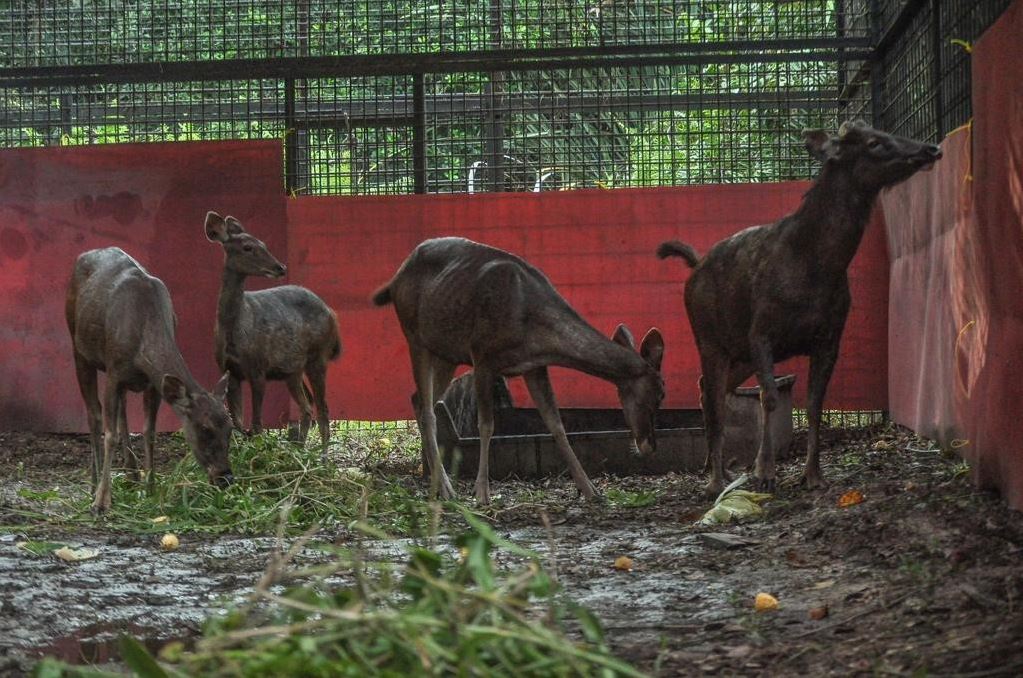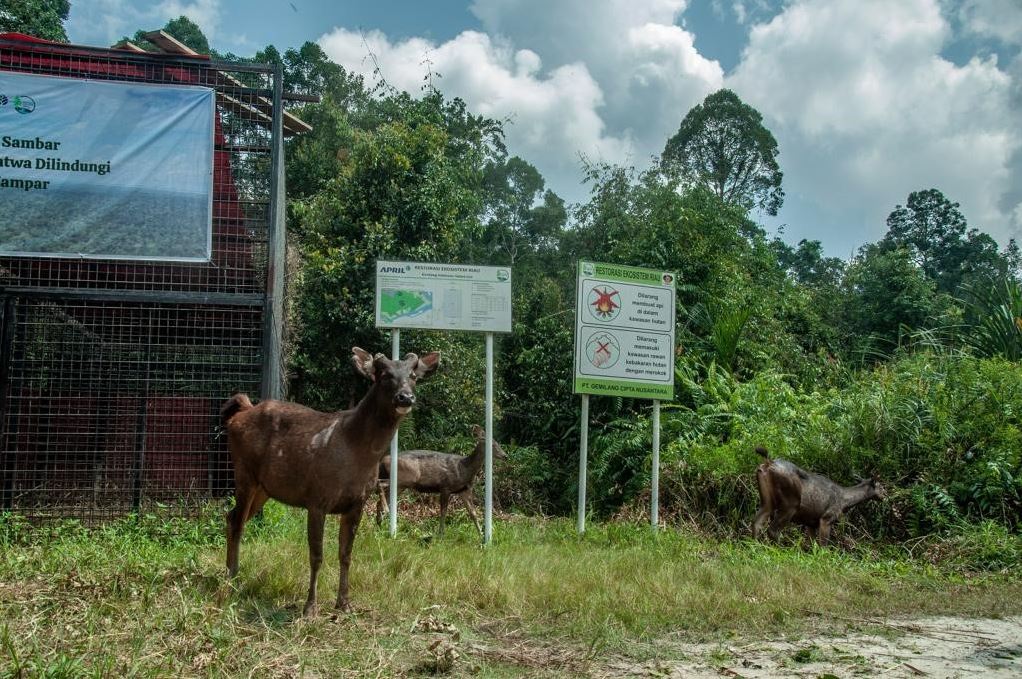November 30, 2023
Every year on August 10, National Nature Conservation Day is a chance to raise awareness and celebrate the many natural wonders of Indonesia. For the team at Restorasi Ekosistem Riau (RER), there was added reason to celebrate this year, as we released a group of sambar deer into the wild.
Guided by research from academics at Gajah Mada University, the Riau Nature Conservation Agency (BBKSDA Riau) teamed up with the RER to translocate a group of Sambar deer from the Meranti Islands to the Kampar Peninsula. The release was a collaborative effort between RER, academia, government, communities, and conservation partners.
This activity is expected to help mitigate human-tiger conflicts in the Kampar Peninsula Landscape by improving the availability of tiger prey. It follows a similar release for a Sumatran tiger called Corina, which was completed on December 20, 2020. This latest project, and the collaborative approach we employed in its execution, is emblematic of our commitment to the conservation of protected species in Riau.
Sentinels of the forest: Sambar deer
Sambar deer (Rusa unicolor) are native to various countries across South Asia, including Nepal, India, Thailand, Taiwan, and Malaysia. The biggest sambar deer can grow up to 160cm tall and may weigh as much as 545 kg, although most are a little smaller, at around 100cm and 350 kg. The males develop distinctive, three-pronged antlers around the mating season, then shed them when the annual rut is finished. They are generally yellowish brown or grey in color, with occasional chestnut markings on their rump or underbelly.

In terms of behavior, both males and females are normally active in the early morning and late evening when the light is low and they feel safer and more inconspicuous in their environment. For this reason, they also prefer the dense cover of deciduous shrubs and grasses, and never stray too far from water; sambar deer are excellent swimmers and will head for water when threatened.
Female sambar deer will actively defend their young against predators – a relatively uncommon trait among deer, who would normally take flight rather than fight. Wild populations of sambar deer have to be on their guard against a number of threats. In many places, their habitat is disappearing due to deforestation, and the animals themselves are trapped, hunted, and sold for bushmeat by humans.
Want to learn more about Sambar deer? Read this article on the RER website.
Meet the new neighbors
Our newest RER residents are a group of four deer, comprising two adult females, one adult male, and one adolescent male (fawn). They had previously been in the care of a local community member in Meranti Islands Regency, who had intended to breed the animals in captivity, but changed his mind following legal advice from the Riau Regional Police Criminal Investigation Department (Ditreskrimsus POLDA RIAU) and BBKSDA Riau.
When relocating these animals and returning them to the wild, our first job was to assess their health and wellbeing to ensure they were in a suitable condition to make the trip. The BBKSDA Riau’s team of veterinarians advised on every step of the relocation process to ensure that the deer weren’t put under unnecessary stress.
The relocation process
There were several steps on this journey. First, the deer were sedated and moved to a transit cage. Next, they were driven to the port of Selat Panjang, where they boarded a boat for the next leg of their journey. After that, the deer were collected from the port on the Kampar Peninsula and transported to RER.
Finally, at around 5pm, the deer arrived at their temporary enclosure, where they had time to recover from their journey, reconnect with each other, and adjust to their new surroundings. This gave them a chance to acclimatize to new scents, sounds, and climate. From door-to-door, the whole trip took around 18 hours.
Once the deer had settled in, they were again assessed by a veterinarian and were found to be in good health – a sign that relocation was successful. Recently, it was discovered that these deer are named Hasan, Vina, Mina, and Abeng (a tribute to the community member who raised and donated them).
Before being released into the wild, the four deer were observed during a five-day acclimatization phase. All four were declared ready for release on the sixth day, which coincided with National Nature Conservation Day on August 10, 2023.
A special moment for RER
On the morning of August 10, the iron door of the cage was lifted, allowing Hasan, Vina, Mina, and Abeng to wander back into the wild. The release ceremony was led by Andri Hansen Siregar, Head of Region I, BBKSDA Riau, in collaboration with RER, a restoration program initiated by the APRIL Group. To see images of the sambar deer release, you can watch our video of the event here.

According to a research project conducted at Gajah Mada University, human-tiger conflicts in the Kampar Peninsula landscape are largely due to a lack of prey species; in times when food is scarce, wild tigers will sometimes turn their attention to livestock, bringing them into conflict with humans. By securing the availability of tigers’ natural prey species, RER is helping to restore natural balance to the ecosystem and mitigate human-tiger conflict.
Working alongside the Indonesian government, academics, and local communities, RER is committed to the protection of vulnerable and protected species in Indonesia. Everyone at RER would like to express our sincere gratitude to the Riau Nature Conservation Agency (BBKSDA Riau) and the Riau Regional Police (POLDA Riau) for making this latest release occasion possible; by working together, we have added a new chapter to the wild and wonderful story of Riau.